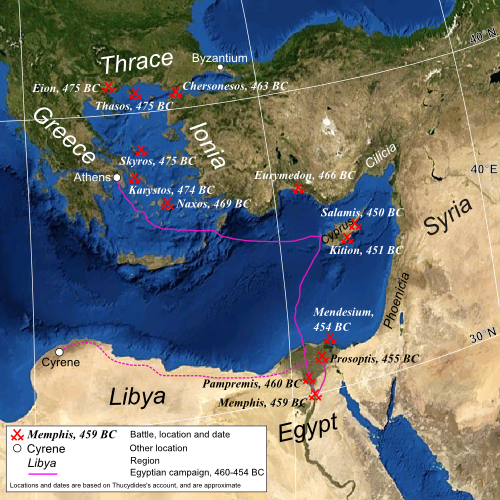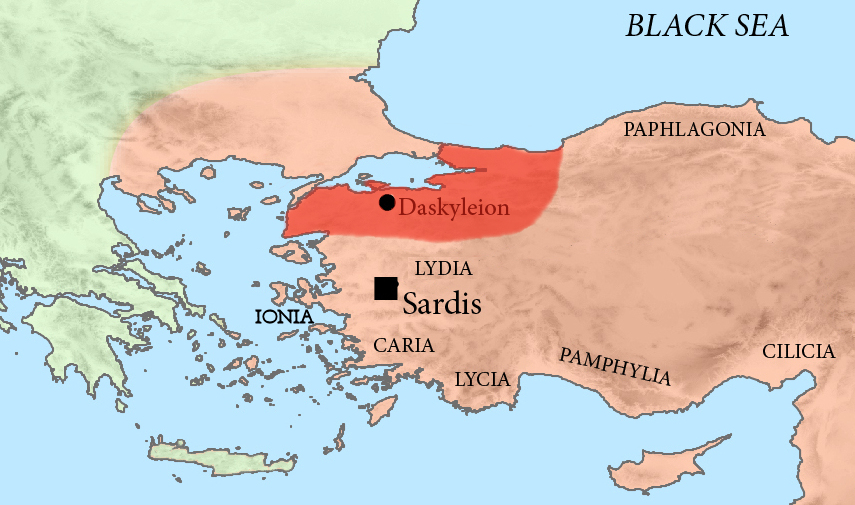|
Artavasdes
Artavasdes is the Hellenized form of the Iranian name . Variant renderings in Greek include (), (), and (); in Armenian (); and in Latin or . Artavasdes' name is the Latin attestation of an Old Iranian name *Ṛtavazdah-, identical to the Avestan Ašavazdah, presumably meaning "powerful/persevering through truth" People with this name include: Persian satraps * Artabazos I of Phrygia (flourished 5th century BC) * Artabazos II of Phrygia (flourished 4th century BC) Kings and emperors Media Atropatene * Artabazanes (flourished 3rd century BC), King of Media Atropatene * Artavasdes I of Media Atropatene (flourished 1st century BC), King of Media Atropatene and Sophene * Artavasdes I, King of Media Atropatene and Armenia from AD 4 to 6, also known as Artavasdes III of Armenia Armenia * Artavasdes I (died 115 BC), King of Armenia * Artavasdes II (died 31 BC), King of Armenia 53 BC to 34 BC * Artavasdes III, King of Armenia and Media Atropatene from AD 4 to 6, also know ... [...More Info...] [...Related Items...] OR: [Wikipedia] [Google] [Baidu] |
Artavasdes I Of Armenia
Artavasdes I (also spelled Artawazd/Artavazd) was the Artaxiad king of Armenia from approximately 160 BC to 115 BC. He was the son and successor of Artaxias I. Little is known about his reign. He is the subject of ancient Armenian folk traditions, which are recorded by later Armenian authors. In , the Parthian king Mithridates II () defeated Artavasdes I and made him acknowledge Parthian suzerainty. Artavasdes was forced to give the Parthians Tigranes (the future king Tigranes the Great) as a hostage, who was either his son or nephew. According to Cyril Toumanoff, Artavasdes I can be identified with the Armenian king who, according to the medieval Georgian annals, interfered in Iberia at the request of local nobility and installed his son, Artaxias, on the throne of Iberia, thereby inaugurating the Iberian Artaxiad dynasty. Name ''Artavasdes'' is the Latinized version of the Old Iranian name , identical to the Avestan , presumably meaning "powerful/persevering through ... [...More Info...] [...Related Items...] OR: [Wikipedia] [Google] [Baidu] |
Artavasdes III Of Armenia
Artavasdes IV of Armenia; also known as Artavasdes II of Atropatene;Swan, ''The Augustan Succession: An Historical Commentary on Cassius Dio’s Roman History, Books 55–56 (9 B.C.–A.D. 14)'', p. 114 Artavasdes II of Media Atropatene and Armenia Major; Artavasdes II, and ArtavasdesBunson, ''Encyclopedia of the Roman Empire'', p. 36 (20 BC – 6 AD) was an Iranian prince who served as King of Media Atropatene. During his reign of Media Atropatene, Artavasdes also served as a Roman Client King of Armenia Major.''A Chronology of the Roman Empire'', p. 365 Family background and early life Artavasdes was the first son born to King Ariobarzanes II of Atropatene by an unnamed wife. He had a younger brother called Gaius Julius Ariobarzanes I and may have had a possible nephew called Gaius Julius Ariobarzanes II. Artavasdes was the namesake of his paternal grandfather, a previous ruling King of Media Atropatene and Sophene, Artavasdes I. He was born and raised in Media Atropatene. Ki ... [...More Info...] [...Related Items...] OR: [Wikipedia] [Google] [Baidu] |
Artavasdes II Of Armenia
Artavasdes II ( ), also known as Artavazd II, was king of Kingdom of Armenia (antiquity), Armenia from 55 BC to 34 BC. A member of the Artaxiad dynasty, he was the son and successor of Tigranes the Great (), who ascended the throne of a still powerful and independent state. His mother was Cleopatra of Pontus, thus making his maternal grandfather the prominent Kingdom of Pontus, King of Pontus Mithridates VI of Pontus, Mithridates VI Eupator. Like his father, Artavasdes continued using the title of King of Kings, as seen from his coins. Name Artavasdes' name is the Latin attestation of an Iranian languages#Old Iranian, Old Iranian name *, identical to the Avestan , presumably meaning "powerful/persevering through truth". It is attested in Armenian language, Armenian as and in Greek language, Greek as , , , and . Biography In , Marcus Licinius Crassus, one of the Roman Republic, Roman First Triumvirate, triumvirs, who had become proconsul of Roman Syria, Syria, had been preparin ... [...More Info...] [...Related Items...] OR: [Wikipedia] [Google] [Baidu] |
Artavasdes I Of Media Atropatene
Artavasdes is the Hellenized form of the Iranian name . Variant renderings in Greek include (), (), and (); in Armenian (); and in Latin or . Artavasdes' name is the Latin attestation of an Old Iranian name *Ṛtavazdah-, identical to the Avestan Ašavazdah, presumably meaning "powerful/persevering through truth" People with this name include: Persian satraps * Artabazos I of Phrygia (flourished 5th century BC) * Artabazos II of Phrygia (flourished 4th century BC) Kings and emperors Media Atropatene * Artabazanes (flourished 3rd century BC), King of Media Atropatene * Artavasdes I of Media Atropatene (flourished 1st century BC), King of Media Atropatene and Sophene * Artavasdes I, King of Media Atropatene and Armenia from AD 4 to 6, also known as Artavasdes III of Armenia Armenia * Artavasdes I (died 115 BC), King of Armenia * Artavasdes II (died 31 BC), King of Armenia 53 BC to 34 BC * Artavasdes III, King of Armenia and Media Atropatene from AD 4 to 6, also kn ... [...More Info...] [...Related Items...] OR: [Wikipedia] [Google] [Baidu] |
Artavasdes IV Of Armenia
Artavasdes IV (also spelled Artabasdes) was a legendary figure, who is mentioned as the "king of the Armenians" under the Sasanian monarch Shapur I () in the ''Historia Augusta''. References Sources * See also * Arsacid dynasty of Armenia * List of Armenian kings This is a list of the monarchs of Armenia, rulers of the ancient Kingdom of Armenia (antiquity), Kingdom of Armenia (336 BC – AD 428), the medieval Bagratid Armenia, Kingdom of Armenia (884–1045), various lesser Armenian kingdoms (908–1170) ... 3rd-century kings of Armenia 3rd-century monarchs in Asia Kings of Armenia Legendary Armenian people Legendary Iranian people {{Armenia-royal-stub ... [...More Info...] [...Related Items...] OR: [Wikipedia] [Google] [Baidu] |
Artavasdes I Mamikonian
Artavasdes I Mamikonian (Armenian: Արտավազդ Ա Մամիկոնյան) was an Armenian sparapet of the Kingdom of Armenia, and the oldest ancestor of the Mamikonian family. He lived at the end of the 3rd and early 4th centuries. According to Christian Settipani Christian Settipani (born 31 January 1961) is a French genealogist, historian and IT professional, currently working as the Technical Director of a company in Paris. Biography Settipani holds a Master of Advanced Studies from the Paris-Sorb ..., he married a daughter of the Iberian ruler Amazasp III, and had two sons, Vache Mamikonian and Hamazasp, whose offspring would play an important role in the politics of Armenia. Sources * *''Les dynasties de la Caucasie chrétienne de l'Antiquité jusqu'au XIXe siècle; Tables généalogiques et chronologiques'', Rome, 1990. 3rd-century births 4th-century deaths Sparapets Ancient Armenian generals Artavasdes I {{Armenia-noble-stub ... [...More Info...] [...Related Items...] OR: [Wikipedia] [Google] [Baidu] |
Wittiza
Wittiza (''Witiza'', ''Witica'', ''Witicha'', ''Vitiza'', or ''Witiges''; 687 – probably 710) was the king of the Visigoths from 694 until his death, co-ruling with his father, Egica, until 702 or 703. Joint rule Early in his reign, Egica made it clear that his intention was to secure his family in a position of power from which they could not be removed. Based on a charter dated to Egica's seventh year (November 693 to November 694) which mentions Wittiza as co-king, it is probable that Wittiza was made co-ruler in 694, even though the '' Chronicle of 754'' places the event in 698.Collins, ''Visigothic'', 108. Numismatic analysis of coinage types also supports the thesis that Wittiza ruled from 694. The raising of Wittiza to the kingship coincided with the revolt of Suniefred and may have been either its cause or effect. On 15Thompson, 249. or 24 NovemberCollins, ''Visigothic'', 109. 700, Wittiza was anointed king; this forms the last entry in the ''Chronica Regum Visigoth ... [...More Info...] [...Related Items...] OR: [Wikipedia] [Google] [Baidu] |
Hellenized
Hellenization or Hellenification is the adoption of Greek culture, religion, language, and identity by non-Greeks. In the ancient period, colonisation often led to the Hellenisation of indigenous people in the Hellenistic period, many of the territories which were conquered by Alexander the Great were Hellenized. Etymology The first known use of a verb that means "to Hellenize" was in Greek (ἑλληνίζειν) and by Thucydides (5th century BC), who wrote that the Amphilochian Argives were Hellenised as to their language by the Ambraciots, which shows that the word perhaps already referred to more than language.. The similar word Hellenism, which is often used as a synonym, is used in 2 Maccabees (c. 124 BC) and the Book of Acts (c. AD 80–90) to refer to clearly much more than language, though it is disputed what that may have entailed. Background Historical By the 4th century BC, the process of Hellenization had started in southwestern Anatolia's Lycia, Caria an ... [...More Info...] [...Related Items...] OR: [Wikipedia] [Google] [Baidu] |
Artabazos I Of Phrygia
Artabazos (; 480 BC - 455 BC) was a Persian people, Persian general in the army of Xerxes I, and later satrap of Hellespontine Phrygia (now northwest Turkey) under the Achaemenid dynasty, founder of the Pharnacid dynasty of satraps. He was the son of Pharnaces (son of Arsames), Pharnaces, who was the younger brother of Hystaspes (father of Darius I), Hystaspes, father of Darius I. Artabazos was therefore a first cousin of the great Achaemenid ruler Darius I. General in the Second Persian invasion of Greece Artabazus was one of the generals of Xerxes I, Xerxes in the 480 BC Second Persian invasion of Greece, in command of the Parthians and the Chorasmians in the Achaemenid army. He was particularly in charge of the reserve forces guarding the route back to Asia, and responsible for suppressing a revolt in Potidaea. The invasion ended the following year with the commander-in-chief Mardonius (general), Mardonius, ignoring advice from Artabazus and others, meeting the Gree ... [...More Info...] [...Related Items...] OR: [Wikipedia] [Google] [Baidu] |
Artabazos II Of Phrygia
Artabazos II (in Greek Ἀρτάβαζος) ( fl. 389 – 328 BC) was a Persian general and satrap of Hellespontine Phrygia. He was the son of the Persian satrap of Hellespontine Phrygia Pharnabazus II, and younger kinsman (most probably nephew) of Ariobarzanes of Phrygia who revolted against Artaxerxes III around 356 BC. His first wife was an unnamed Greek woman from Rhodes, sister of the two mercenaries Mentor of Rhodes and Memnon of Rhodes. Towards the end of his life, he became satrap of Bactria for Alexander the Great. Revolt of Datames In 362 BC, Artabazos was sent by Artaxerxes II to capture Datames, the satrap of Cappadocia, who had joined in the Satraps' revolt in which Artabazus' brother, Ariobarzanes, was a participant. However, Artabazos was defeated by Datames. Artaxerxes II ultimately prevailed, and Ariobarzanes was crucified and Datames assassinated. Rebellion against Artaxerxes III Following the capture and death of his brother, Artabazos w ... [...More Info...] [...Related Items...] OR: [Wikipedia] [Google] [Baidu] |



